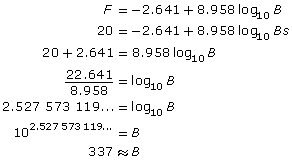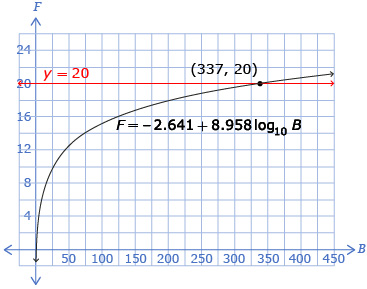In Try This 4 you used a logarithmic function to determine the number of flowers and the number of butterflies observed in an area. You may have calculated that if there are 100 butterflies observed in an area, there would be approximately 15 flower species.

You may have found that when there are 20 flower species in an area, there should be approximately 337 butterflies observed.

You may have determined the number of butterflies observed by using a graph like this one:

The intersection point of the graph is approximately (337, 20), so approximately 337 butterflies would be observed when there are 20 flower species in an area.